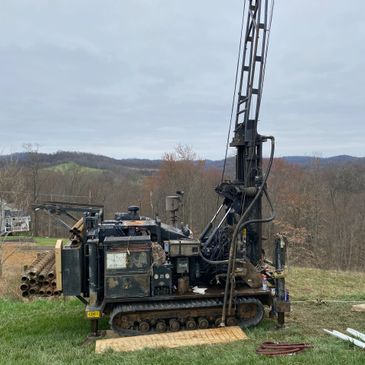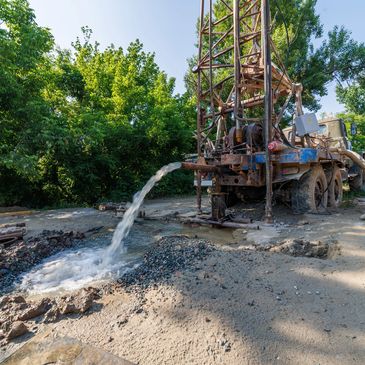Services

Geo Technical Drilling
Geo Technical Drilling
Geo Technical Drilling
Geotechnical drilling is a specialized type of drilling used to investigate the physical properties of soil and rock beneath a site, primarily for the purpose of designing foundations and assessing ground stability for construction, mining, and infrastructure projects.

Water Well Drilling
Geo Technical Drilling
Geo Technical Drilling
Water well drilling is the process of creating a hole in the ground to access groundwater from underground aquifers for human, agricultural, industrial, or environmental use. It involves drilling, casing, developing, and equipping a well to produce clean, sustainable water.
Lite Dirt Work
Geo Technical Drilling
Infiltration testing
Lite dirt work refers to small-scale earthmoving and ground preparation tasks that involve moving, shaping, or leveling soil with light machinery or hand tools. It’s commonly done for landscaping, site preparation, drainage improvements, or small construction projects.

Infiltration testing
Geo Technical Drilling
Infiltration testing
Infiltration testing is the process of measuring how quickly water soaks into the soil. It’s commonly used in construction, civil engineering, and environmental science to assess soil permeability, especially for stormwater management, septic system design, and land development.
What Would I need These Services For?
Geo Technical Drilling
Geo Technical Drilling
Geo Technical Drilling

The main goal is to gather subsurface data to:
- Evaluate soil and rock strength, composition, and behavior.
- Determine groundwater conditions.
- Identify potential hazards like sinkholes, landslides, or contamination.
- Inform the design of foundations, retaining walls, tunnels, dams, and other structures.
Used in:
- Building and bridge foundations.
- Road and rail construction.
- Tunneling and underground structures.
- Dams, levees, and embankments.
- Environmental site assessments (e.g., for contamination).
Water Well Drilling
Geo Technical Drilling
Geo Technical Drilling

The goal is to tap into aquifers—geological formations that hold and transmit water—by:
- Providing reliable access to groundwater.
- Supporting irrigation, drinking water, livestock, or industrial supply.
- Monitoring groundwater levels and quality (in environmental or research contexts).
Applications:
- Domestic – rural homes, cabins, off-grid living
- Agricultural – irrigation, livestock.
- Municipal – community water systems.
- Industrial – mining, factories, cooling systems.
- Monitoring – groundwater research or contamination tracking.
Lite Dirt Work

The goal of lite dirt work is to:
- Prepare land for structures, driveways, or landscaping.
- Improve site drainage or correct grading.
- Clear brush or topsoil.
- Perform minor excavation or fill work.
- Maintain or improve property aesthetics and function.
Typical Use:
- Preparing a lawn or garden area.
- Fixing erosion problems or drainage issues.
- Creating or repairing gravel driveways.
- Building small pads or footings.
- Cleaning up overgrown lots or backyards.
- Filling in holes or low spots on a property.
Infiltration Testing

The main goal is to determine the infiltration rate of soil (how fast water can pass through it) to:
- Design stormwater drainage systems (e.g. infiltration basins, swales, rain gardens).
- Size and site septic systems (leach fields).
- Assess soil suitability for construction or landscaping
- Prevent runoff, erosion, or flooding.
- Ensure compliance with local or environmental regulations.
Applications:
- Stormwater Management:
- Designing rain gardens, infiltration trenches, bioswales.
- Ensuring post-construction runoff is controlled.
- Septic Systems:
- Sizing drain fields and ensuring effluent can be absorbed.
- Land Development:
- Determining if the land is suitable for construction.
- Environmental Studies:
- Understanding watershed behavior or soil health.
- Understanding watershed behavior or soil health.
This website uses cookies.
We use cookies to analyze website traffic and optimize your website experience. By accepting our use of cookies, your data will be aggregated with all other user data.